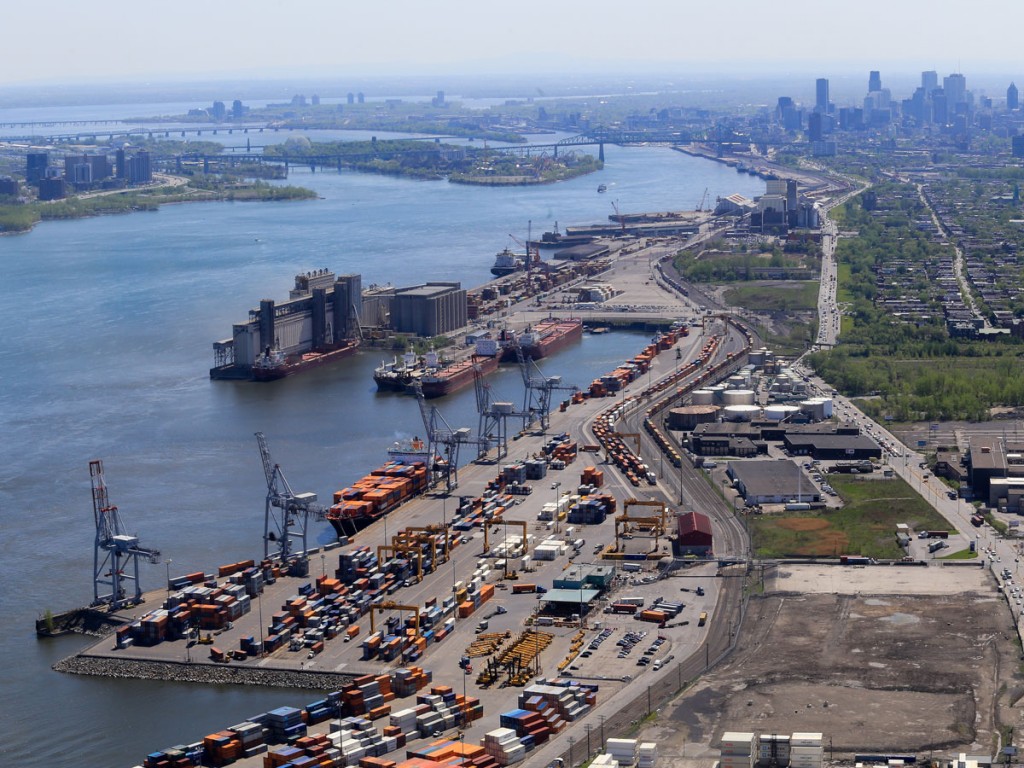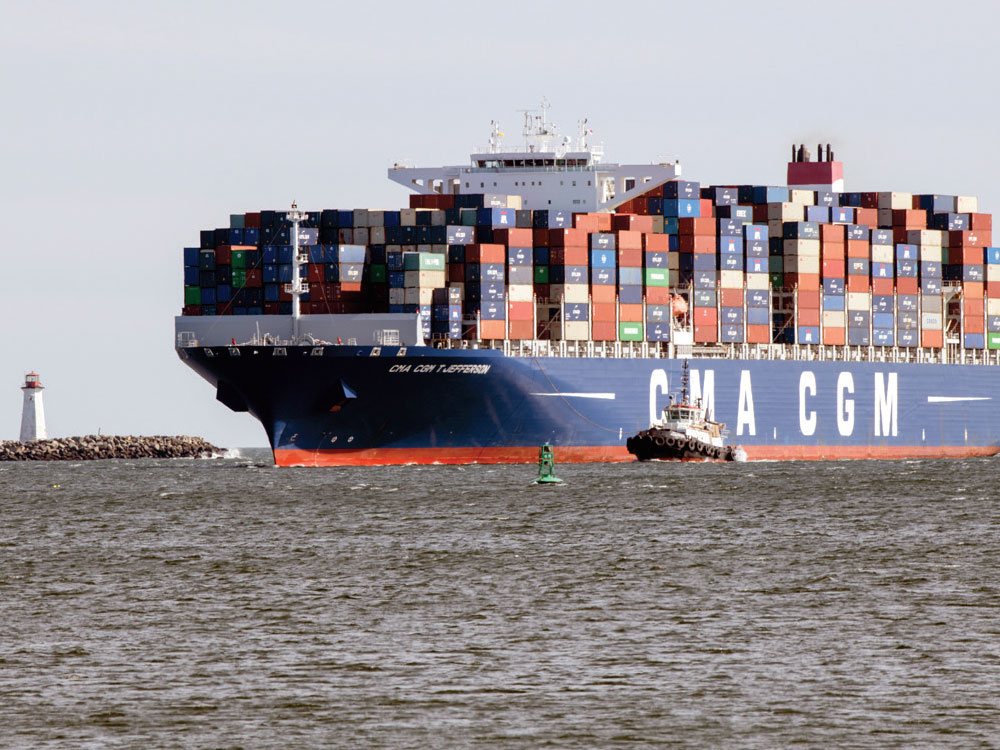Amidst the COVID-19 pandemic, Canadian ports, categorized by the federal authorities among essential services, have remained opened for business while taking all the necessary measures to protect the health and safety of their employees. Ports on the East Coast are no exception. For the most part, traffic trends have been on a downward path since March – but major expansion projects, notably on the container front at the ports of Montreal, Halifax and Quebec, remain on track.
Freight transport operations are running at full capacity at the Port of Montreal. At Canada’s biggest eastern gateway and second largest container port after Vancouver, no sailing cancellations by carriers have reportedly occurred, and rail transport continues as scheduled.

East Coast Ports Fare Better
Whereas cargo numbers are down up to 20% at West Coast ports due to the plunging trade with Asia-led China, volumes may be contracting to a lesser degree at key Canadian ports on the eastern seaboard.
“Some container vessels from Europe are even coming in full, though we are expecting an overall decline this year that is still difficult to estimate,” Tony Boemi, vice-president of growth and development for the Montreal Port Authority, told AJOT. “Our January and February numbers were even up several percentage points over last year.”
In 2019, container traffic at the Port of Montreal increased by 4.4% to a record 1.75 million TEUs.

After tentatively forecasting that cargo volumes will diminish in March and April, he said the main factor was an anticipated drop in exports to Asia because shippers were having difficulty booking space on trans-Atlantic services to Europe, where exports would normally be transshipped onto vessels destined for Asia. Blank sailings have markedly reduced capacity on Europe-Asia routes.
Highlights on port infrastructure projects include the work to begin this year on expanding the Viau container terminal by 250,000 TEUs. If completed as scheduled, it will be operational by 2023. The capacity of the port’s rail network will be enlarged by 20%. Funding has been received from the federal government to improve truck and rail fluidity within the port area.
Plans for a major container terminal project at Contrecoeur with capacity of 1.15 million TEUs some 25 miles downstream from Montreal on the St. Lawrence River were given a significant boost last December through the commitment of up to C$300 million in financing announced by the Canada Infrastructure Bank. The environmental permits are expected to be received in 2020, which would open the path to the beginning of construction.
East Coast Port Investments
At the Port of Halifax, which handled about 546,000 TEUs in 2019, port spokesman Lane Farguson told AJOT: “While the Port of Halifax has had no blanked voyages, there has been some decline in both import and export cargo as a result of COVID-19. It is too early to say what the total impact will be. In the short term, all marine partners are together working very hard to maintain supply chain fluidity and keep cargo moving through our international gateway.”
The deep-water Nova Scotia port is targeting the big ships market on North America’s East Coast, hoping to capture some Midwest business from formidable U.S. competitors who have also deepened their facilities. In late March, Halifax received its largest vessel to date, the 14,414 –TEU CMA CGM T. Jefferson.
Recently succeeding Karen Oldfield as chief executive was Capt. Alan Gray. Previously general manager and harbour master at Freemantle Ports in Australia, Capt. Gray sees growth opportunities with Asia as well as with traditional markets in Europe.
Through strategic planning, the Halifax Port Authority is investing $35 million to extend the main pier at what is today PSA Halifax (formerly Halterm) to handle two ultra-large containerships simultaneously.
Meanwhile, the Port of Quebec, which handled some 28 million metric tons of bulk cargo in 2019, has reportedly not experienced a major decline so far this year thanks to a robust business with vessels trading on the Great Lakes and on international routes. Still awaiting a final financing package and regulatory approval from federal environmental authorities is the ambitious, C$775 million Laurentia intermodal container terminal – involving a partnership between CN, the Port of Quebec and Hutchison Ports, with opening slated for spring 2024.





